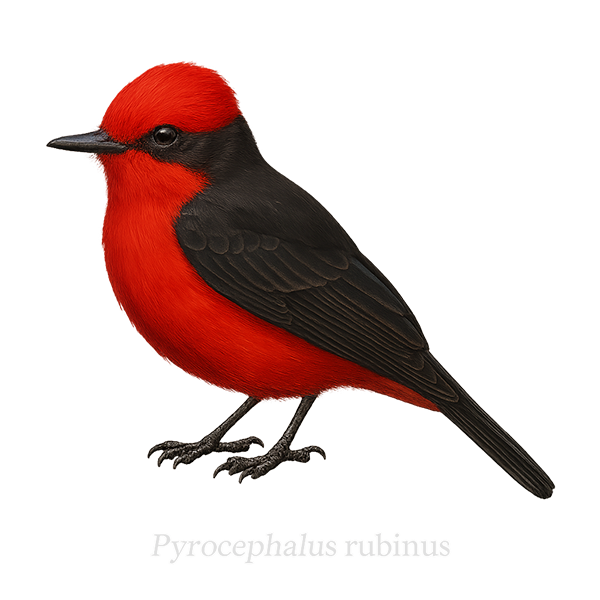Your wildlife photography guide.
Explore the vermilion flycatcher in detail, study its behavior, prepare your shots.
Where to observe and photograph the vermilion flycatcher in the wild
Learn where and when to spot the vermilion flycatcher in the wild, how to identify the species based on distinctive features, and what natural environments it inhabits. The WildlifePhotographer app offers tailored photography tips that reflect the vermilion flycatcher’s behavior, helping you capture better wildlife images. Explore the full species profile for key information including description, habitat, active periods, and approach techniques.
Vermilion Flycatcher
Scientific name: Pyrocephalus rubinus

IUCN Status: Least Concern
Family: TYRANNIDAE
Group: Birds
Sensitivity to human approach: Suspicious
Minimum approach distance: 10 m
Courtship display: October to December
Incubation: 13-15 jours
Hatchings: October to January
Habitat:
open forests, semi-arid areas, grasslands, riverbanks
Activity period :
Primarily active during the day, with peak activity in the morning and late afternoon.
Identification and description:
The Pyrocephalus rubinus, or Vermilion Flycatcher, is a small bird with striking plumage, especially the male, which displays a bright red on its chest and head, contrasting with its dark brown back. This passerine is often seen perched on low branches, watching for insects to feed on. It is mainly found in South America, but can also be seen in parts of Central and North America. Its habitat ranges from open forests to semi-arid areas, including grasslands and riverbanks. The Vermilion Flycatcher is known for its spectacular courtship display, where the male performs acrobatic flights to woo the female.
Recommended lens:
400 mm – adjust based on distance, desired framing (portrait or habitat), and approach conditions.
Photography tips:
To photograph the Vermilion Flycatcher, choose early morning or late afternoon hours when the light is soft and enhances the vivid colors of its plumage. Use a telephoto lens of at least 400mm to capture precise details without disturbing the bird. Be patient and wait for it to perch on an open branch to achieve a blurred background that will highlight the subject.
The WildlifePhotographer App is coming soon!
Be the first to explore the best nature spots, track rutting seasons, log your observations, and observe more wildlife.
Already 1 430 wildlife lovers subscribed worldwide

